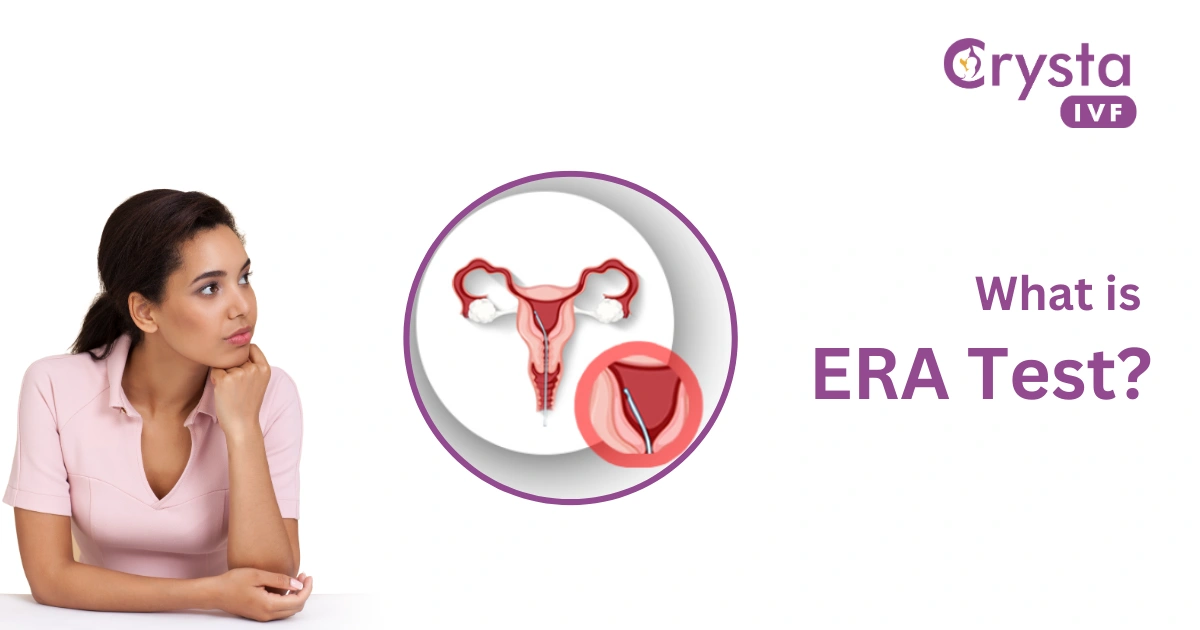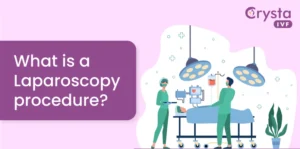The parenthood journey is filled with laughter, joy, and a prominent vision of the future, but the story can be different for some couples. After all, when you invest your time, faith, and financial resources in fertility treatments to begin a new chapter of life with a healthy baby in your arms, you want the best possible chances of successful conception. One crucial test in the field of assisted reproductive technology (ART) that can increase the likelihood of successful conception is the Endometrial Receptivity Array (ERA Test).
However, due to less awareness and lack of knowledge, many couples have yet to learn the ERA Test. Hence, this blog carries all the vital information, including the ERA test, how it works, and what the ERA test costs in India.
What is the ERA test, and how does it work?
The ERA test is a game-changer in the fertility industry. It is a cutting-edge diagnostic test performed to assess the receptivity of a woman’s uterine lining, also known as the endometrium. Endometrial receptivity is a crucial factor in ensuring the success of your pregnancy with the help of IVF or other assisted reproductive techniques. The ERA test potentially determines the optimal window of time for embryo implantation, significantly increasing your chances of a successful pregnancy.
If you want to know how the Endometrial receptivity Array works, let’s first understand the science behind why the ERA test was introduced. In normal pregnancy, an embryo does not immediately implant into the uterine lining. Instead, after fertilization, it spends about three days in the fallopian tube, from where it travels to the uterus. It takes a few more days before it gets implanted into the uterus.
When fertility treatments are performed, healthcare providers aim to mimic natural pregnancy by transferring the embryo shortly after it has developed for about a week in the embryology lab. However, researchers suggest that the optimal time for transfer is different.
When a genetically normal embryo is transferred during this ‘golden hour,’ the chances of a healthy pregnancy and a live birth increase to about 60–65%. Many doctors believe that some women may not be receptive to an embryo implanted at the standard transfer timing. For these women, success may come when the embryo transfer is conducted earlier or later.
Therefore, a personalized approach to monitoring and evaluating your reproductive health is essential to predicting the right time for embryo transfer. Fortunately, you don’t have to worry anymore. Connecting with the best IVF center in Noida and consulting with a top fertility specialist will significantly improve your chances of success with fertility treatment.
Moreover, the ERA test classifies the menstrual cycle into five phases:
- Pre-receptive phase: Before the implantation window
- Early receptive stage: Near the ideal implantation window
- Receptive phase: The ideal implantation window
- Late receptive phase: The implantation window is about to close.
- Post-receptive phase: The implantation window is closed.
To determine the ERA test and how it works, let’s understand it more deeply by reviewing the ERA procedure.
Endometrial Receptivity Array Procedure
Endometrial Biopsy
The ERA procedure typically begins with a minimally invasive endometrial biopsy. A small sample of the woman’s endometrial tissue is collected during this step. This biopsy is performed during the woman’s menstrual cycle or in a hormonally controlled cycle.
Gene expression analysis
The collected endometrial tissue is then subjected to gene expression analysis. This analysis examines the expression levels of specific genes associated with endometrial receptivity.
Personalized timing
According to gene expression analysis, the ERA test aims to pinpoint the optimal time window for embryo transfer. This personalized timing measure ensures that the embryo is transferred into the woman’s uterus when the endometrium is most receptive to increase your chances of successful conception.
Improving IVF success
The endometrial receptivity array procedure is mostly beneficial for women who have experienced recurrent implantation failure during in vitro fertilization (IVF) cycles. Your healthcare provider will conduct the ERA test to identify the ideal time window for embryo transfer, which helps maximize the chances of a viable pregnancy.
Increased Precision
The ERA test enhances the precision of embryo transfer timing, moving beyond the standard protocols. It informs us that endometrial receptivity can vary from woman to woman and from cycle to cycle, allowing for a more individualized approach to fertility treatment to ensure success.
There’s no need to stress if you still have doubts about the ERA test. By following the advice of experts, we will explore the benefits and risks of the ERA test so you can make an informed decision for yourself.
Benefits of ERA
There have been many implantation failures due to the endometrium. But now, doctors can check exactly when your endometrial lining is ready to receive the embryo in the IVF treatment. Here are some of the benefits as suggested by your fertility experts:
- Saves time
- Fewer IVF failures
- Successful pregnancy
- Cost Effective
The ERA test is simple and can even be performed in a consultation room. There are no known risks associated with giving the biopsy for the ERA. Despite having many advantages, people are still not making it their first choice to seek fertility treatment due to confusion about the ERA cost in India.
ERA test cost in India
The ERA test cost in India can vary depending on several factors, including the clinic or fertility center you choose, the city where the ERA procedure is performed, and any additional services or consultations required. On average, the ERA test in India can range from INR 35000 to INR 40,000/- or more.
It’s important to note that while the cost of the ERA test is essential, the fertility clinic’s reputation should also be considered when choosing a reputable clinic. Being the best in the fertility industry, Crysta IVF works with experienced professionals to ensure the accuracy and reliability of the test results and improve your chances of successful IVF or any other fertility treatment.




